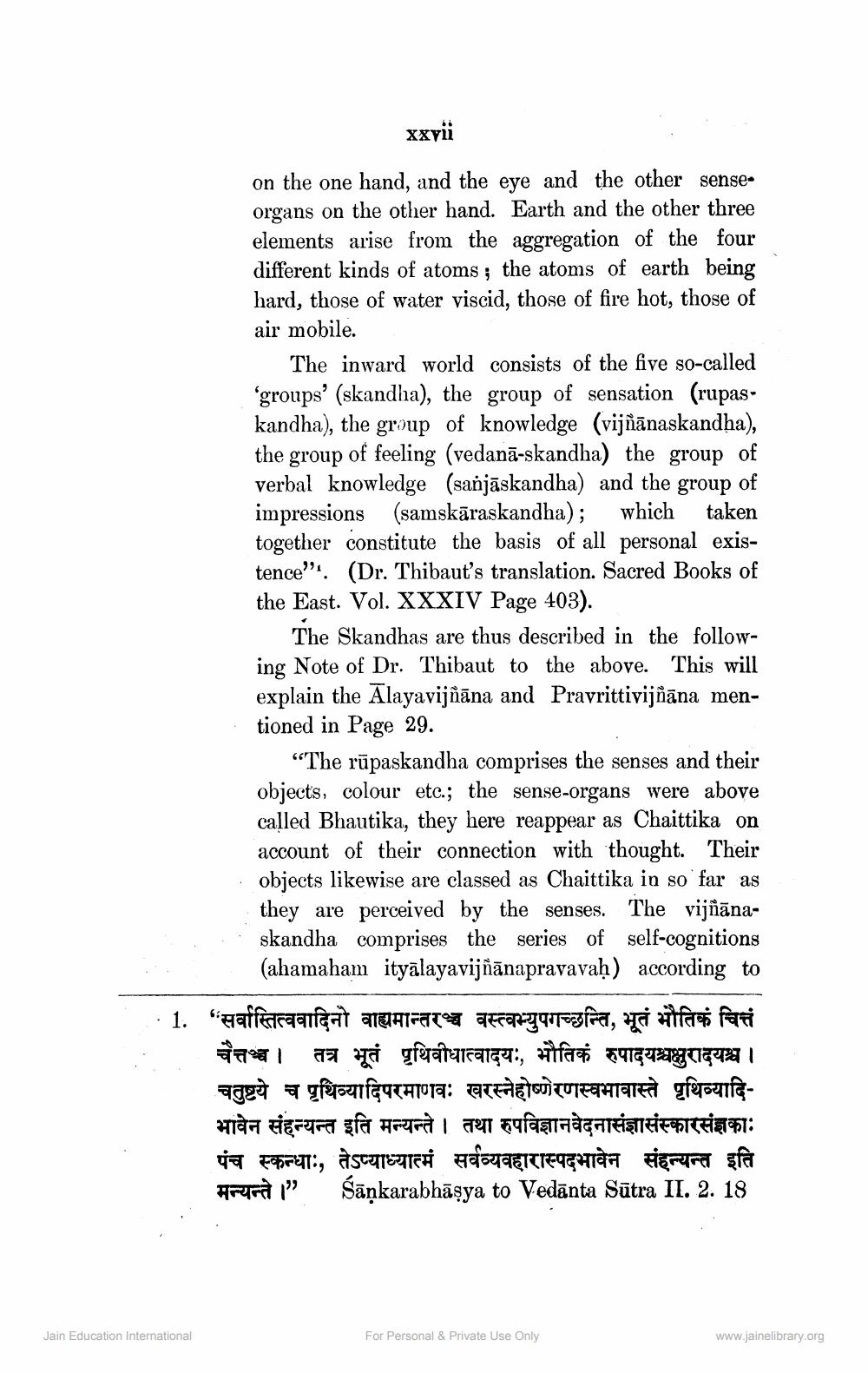________________
xxvii
on the one hand, and the eye and the other sense. organs on the other hand. Earth and the other three elements arise from the aggregation of the four different kinds of atoms; the atoms of earth being hard, those of water viscid, those of fire hot, those of air mobile.
Jain Education International
The inward world consists of the five so-called 'groups' (skandha), the group of sensation (rupas. kandha), the group of knowledge (vijñānaskandha), the group of feeling (vedana-skandha) the group of verbal knowledge (sanjāskandha) and the group of impressions (samskāraskandha) ; which taken together constitute the basis of all personal existence". (Dr. Thibaut's translation. Sacred Books of the East. Vol. XXXIV Page 403).
The Skandhas are thus described in the following Note of Dr. Thibaut to the above. This will explain the Alayavijñāna and Pravrittivijñāna mentioned in Page 29.
"The rupaskandha comprises the senses and their objects, colour etc.; the sense-organs were above called Bhautika, they here reappear as Chaittika on account of their connection with thought. Their objects likewise are classed as Chaittika in so far as they are perceived by the senses. The vijñānaskandha comprises the series of self-cognitions (ahamaham ityalayavijñānapravavah) according to
1. “ सर्वास्तित्ववादिनो वाह्यमान्तरञ्च वस्त्वभ्युपगच्छन्ति, भूतं भौतिकं चित्तं चैत्तश्च । तत्र भूतं पृथिवीधात्वादयः, भौतिकं रुपादयश्चक्षुरादयश्च । चतुष्टये च पृथिव्यादिपरमाणवः खरस्नेहोष्णे रणस्वभावास्ते पृथिव्यादिभावेन संहन्यन्त इति मन्यन्ते । तथा रुपविज्ञानवेदनासंज्ञासंस्कारसंज्ञकाः पंच स्कन्धाः, तेऽप्याध्यात्मं सर्वव्यवहारास्पदभावेन संहन्यन्त इति मन्यन्ते ।” Śāņkarabhāṣya to Vedanta Sūtra II. 2. 18
For Personal & Private Use Only
www.jainelibrary.org




